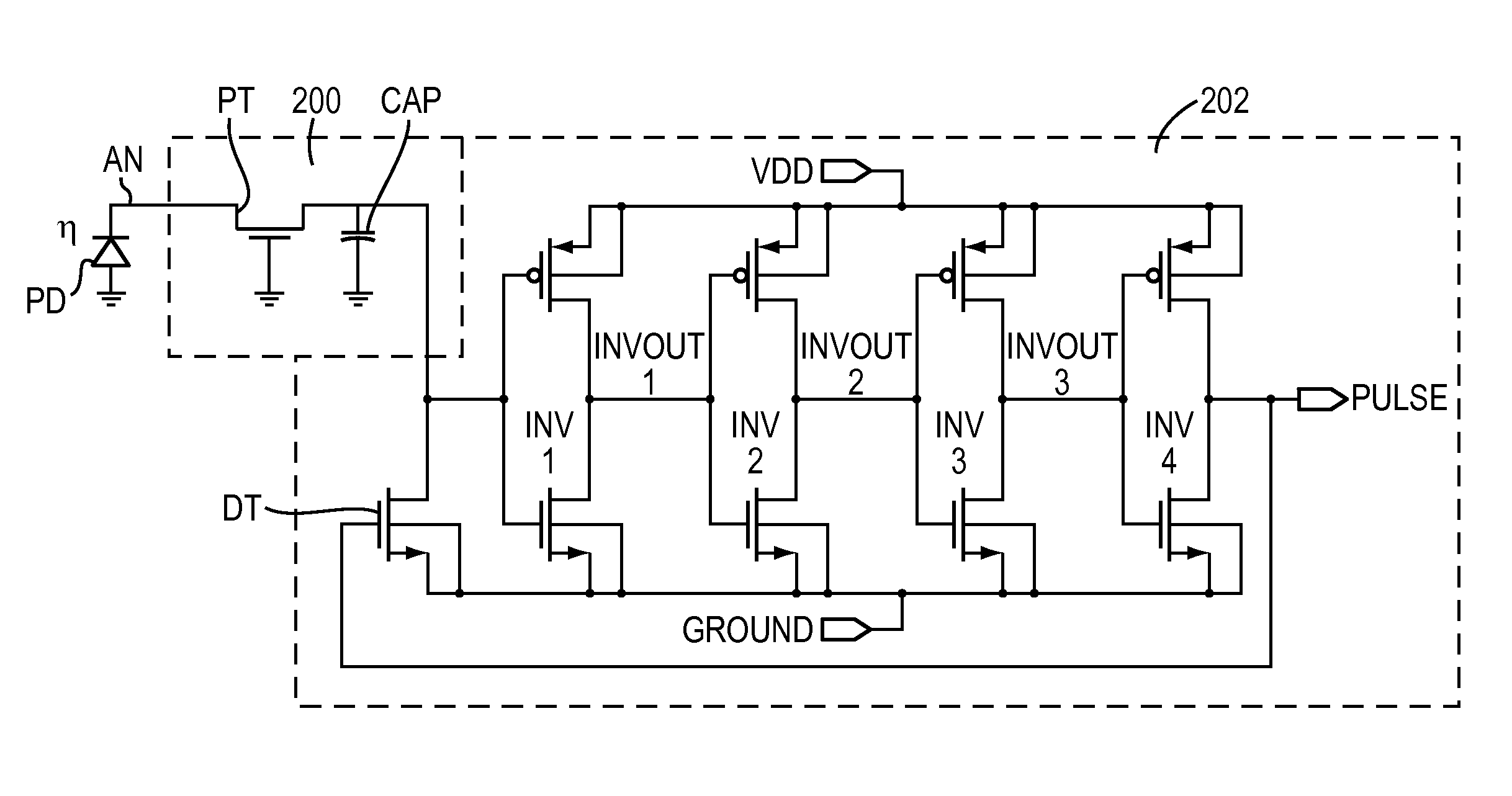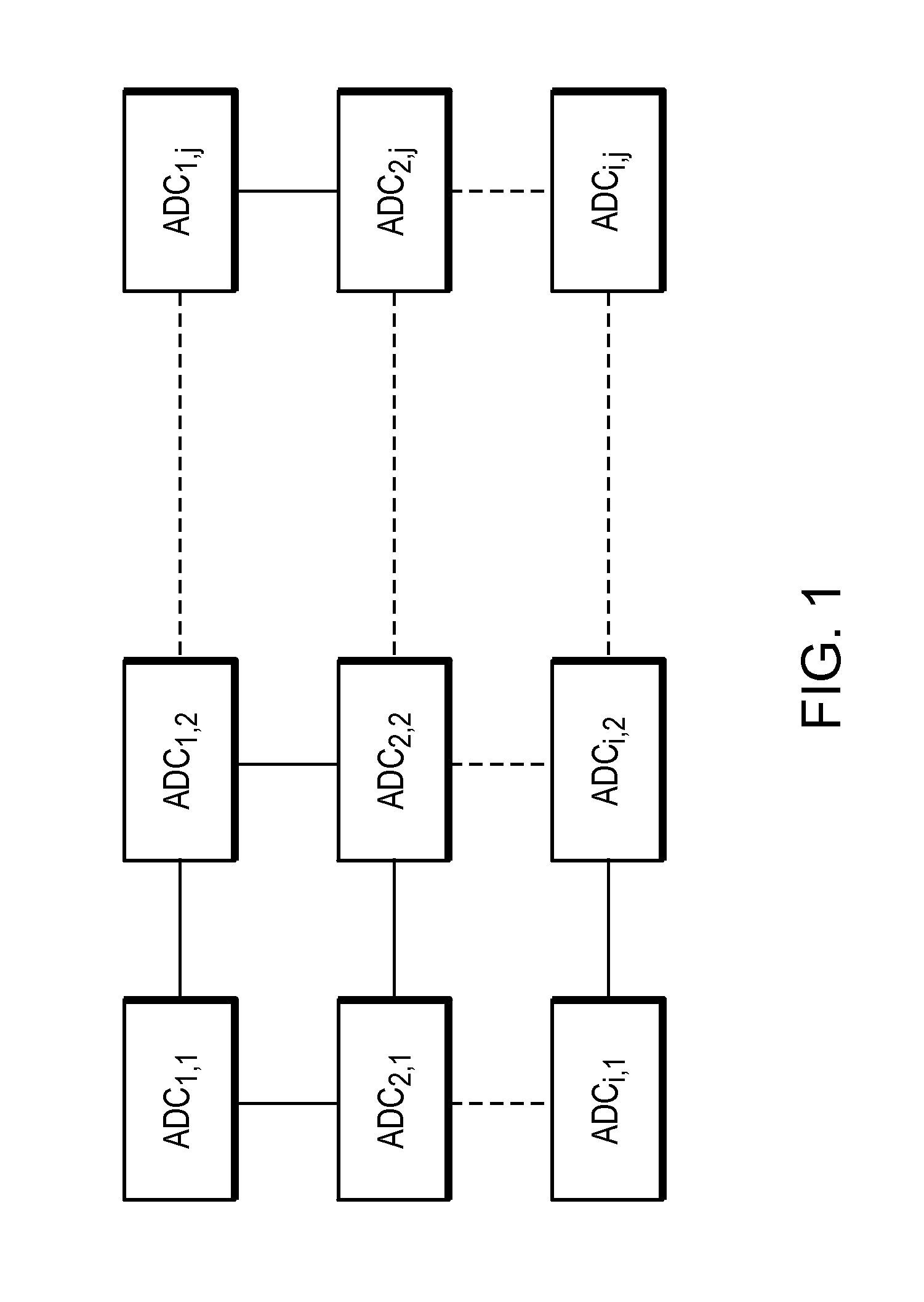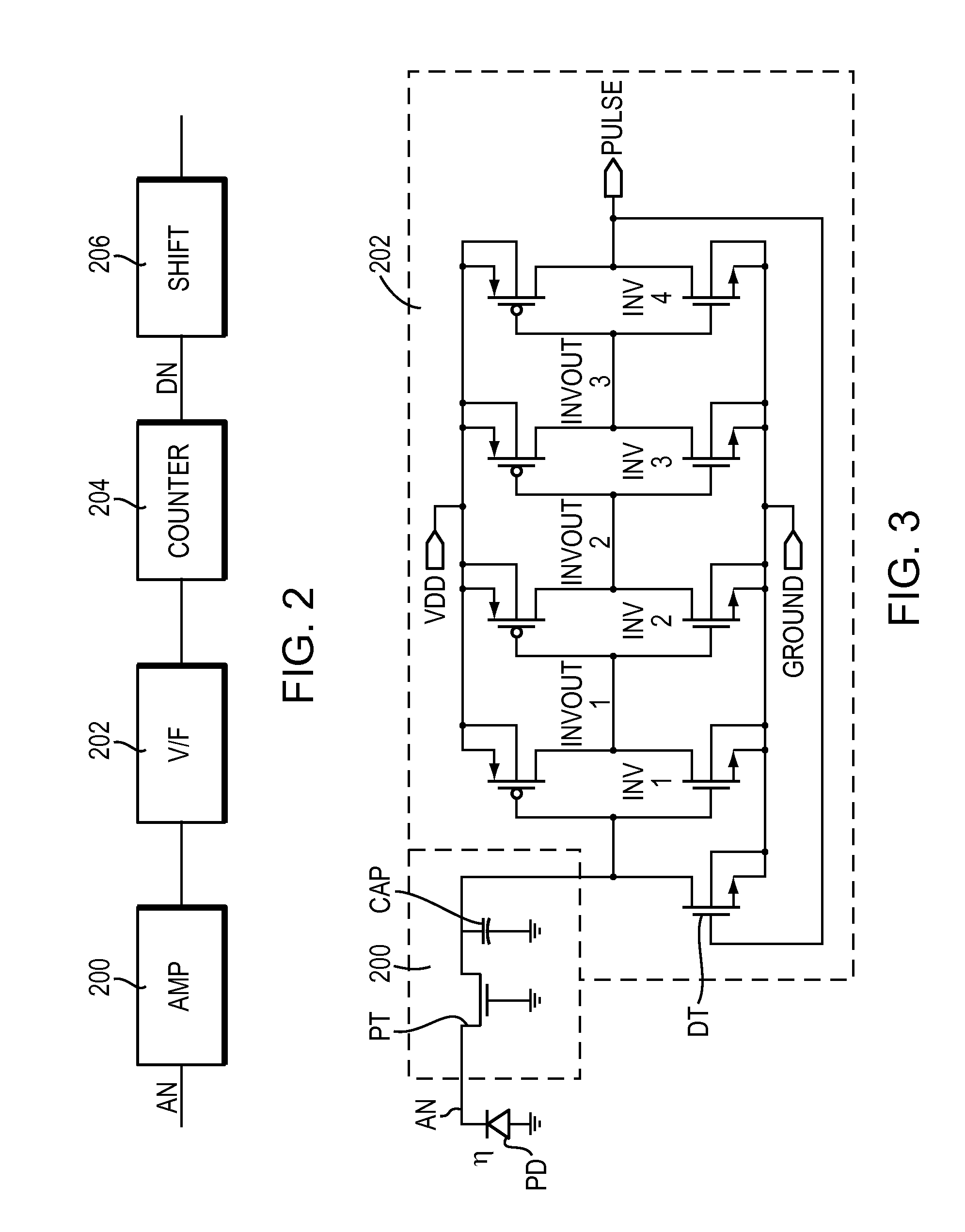Digital readout method and apparatus
a digital readout and digital technology, applied in analogue/digital conversion, television systems, instruments, etc., can solve the problems of limiting the practical scalability of conventional designs, specific analog designs can target (and possibly achieve) one or more requirements, and fail, etc., to achieve the elimination of highly linear analog electronics, and the effect of large charge storage capacitors
- Summary
- Abstract
- Description
- Claims
- Application Information
AI Technical Summary
Benefits of technology
Problems solved by technology
Method used
Image
Examples
Embodiment Construction
[0030]The block diagram of FIG. 1 illustrates an apparatus in accordance with the principles of the present invention that includes a two-dimensional array 100 of analog to digital converters (ADCs), ADCi,j (where i=1 through n and j=1 through m). In this illustrative embodiment, the ADCs are all self-contained. That is, in such an embodiment, each of the ADCs is capable of operating without signaling, such as an analog ramp signal, or analog reference signal supplied by an outside source. Each of the ADCs within the array may include circuitry to convert a current mode signal to a voltage signal for conversion. In such an embodiment, a capacitor may be employed to integrate charge from the current mode signal and the capacitor and ADC architecture may be selected to determine the least significant bit of each of the ADCs. In such an embodiment, a counter may be employed to determine the most significant bit of each of the ADCs.
[0031]The block diagram of FIG. 2 provides a more detai...
PUM
 Login to View More
Login to View More Abstract
Description
Claims
Application Information
 Login to View More
Login to View More - R&D
- Intellectual Property
- Life Sciences
- Materials
- Tech Scout
- Unparalleled Data Quality
- Higher Quality Content
- 60% Fewer Hallucinations
Browse by: Latest US Patents, China's latest patents, Technical Efficacy Thesaurus, Application Domain, Technology Topic, Popular Technical Reports.
© 2025 PatSnap. All rights reserved.Legal|Privacy policy|Modern Slavery Act Transparency Statement|Sitemap|About US| Contact US: help@patsnap.com



